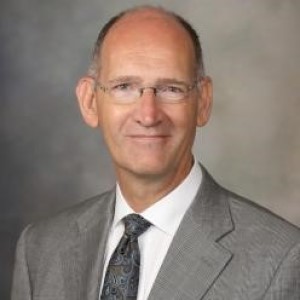Mayo Clinic CIO discusses data-sharing, interoperability, HL7 FHIR standard

Christopher J. Ross, CIO at The Mayo Clinic in Rochester, Minnesota, has data-sharing on his mind big time. He believes it’s one of the biggest problems healthcare faces today. And that it’s not a problem any individual healthcare organization can solve.
Ross will be discussing data-sharing, interoperability and the HL7 Fast Healthcare Interoperability Resources (FHIR) standard as one of the keynote speakers at the upcoming HIMSS Health 2.0 13th Annual Conference in a session entitled “Building Health Systems that Work for the Patient and Provider.” The session will be held from 4:25 p.m. to 4:55 p.m. on September 17 in the Mission City B1 room in the Santa Clara (California) Convention Center.
Here, Ross offers a preview of some of the issues he’ll be discussing at the conference.
No single organization can solve the problem
In his daily work, Ross has encountered health technology issues in the patient care delivery process. The best example of such an issue is data-sharing. And he has strong feelings on how to resolve this issue.
“We have had and continue to have a systematic problem in making data available for patients and the clinicians who take care of them,” he explained. “This is not a problem that any single institution can solve. It is not a problem that any single vendor can solve. This is a problem that requires that we extract very complex and large amounts of data from one system and find a way to insert it into another system that uses a different database schema, a different user interface, all those problems.”
The only way to effectively answer this problem is to figure out how to extract all this complicated data and share it in a way that is neutral with respect to the database it came from and the database it is going to, he stated.
"The FHIR work is not just a specific technology but also a way of thinking and a way of acting."
Christopher J. Ross, The Mayo Clinic
“To me, the most important activity we have in our community right now is the advancement of those kinds of data-sharing arrangements of which almost all are using HL7 FHIR,” Ross said. “The FHIR work is not just a specific technology but also a way of thinking and a way of acting. Most of the problems that me and my fellow CIOs encounter are no longer problems we can solve by ourselves; we need to solve them as part of a broader community.”
A unified data platform for one and all
Ross and his team at Mayo Clinic have been building innovative solutions to make information technology simplify experiences for all the players in the healthcare system, and to advance the art and science of data-sharing.
“One is that we created a unified data platform that draws data out of all of our systems and puts them in one place for usability,” he explained. “And we’ve made that data accessible through common APIs. And the goal of simplification is when we have innovative physicians and teams, our strategy has been to try to make it easy for them to build on a common infrastructure so that everything they build has a much better chance of talking to all the other things being built.”
The simplification idea was to take away the infrastructure construction so innovators can focus on the clinical problems at hand and leverage all the out-of-the-box infrastructure the IT team can provide for them.
“We had projects that had fantastic ideas, but their ideas were more advanced than where our technology was a couple of years ago,” Ross recalled. “So these innovators would spend 80% of their budgets building basic infrastructure and only 20% of their money on the actual clinical idea. We are trying to flip that, so they can spend only 20% of their budget on connecting to the infrastructure and 80% of their money on creating an innovation.”
Customer-focused service delivery model
On a related front, Ross and the Mayo IT team have adopted an aggressive, customer-focused service delivery model.
“We think of ourselves as a vendor that is providing services as if we had to compete for the business,” Ross explained. “We have tried to make all of our processes for, ‘How do I get an answer to my problem,’ ‘How do I start a project,’ ‘How do I advance a good idea,’ and in addition to focusing on being good technologists we have focused aggressively on a customer-oriented service delivery model.”
The IT team has worked on this for about six years and just now is in the second phase in what it calls a “service delivery revolution,” saying it is a journey that never ends.
“We know we can do projects faster and cheaper, we have also been able to measure and raise our customer satisfaction,” Ross said of the effort to date. “Internal customers used to be pretty frustrated with us, which was kind of ironic because our strategy used to be to put people really close to the business and meet their needs locally.”
But by changing the emphasis to instead have a “We’re all in this together” approach with a more or less single enterprise delivery model, Ross thinks the IT team is doing a better job now as opposed to when it tried to respond to every single localized demand.
“Our customers would say that it was worth the trade-off,” he concluded. “By doing things in a better way in an enterprise way actually resulted in a better outcome than by doing everything localized.”
Twitter: @SiwickiHealthIT
Email the writer: bill.siwicki@himssmedia.com
Healthcare IT News is a HIMSS Media publication.
Health 2.0
The Santa Clara conference will showcase cutting-edge innovation transforming healthcare Sept. 16-18.

























